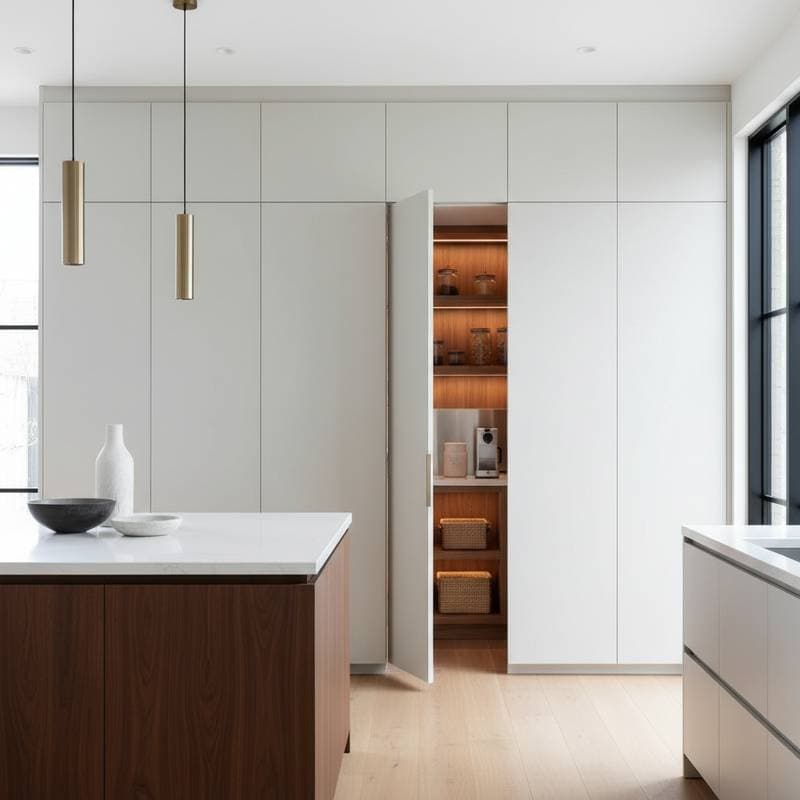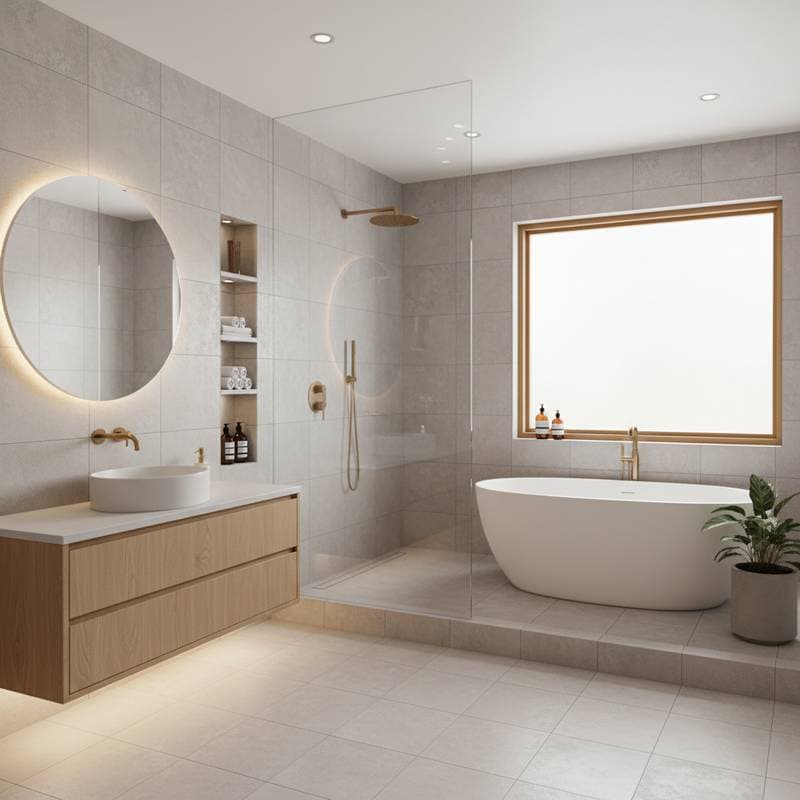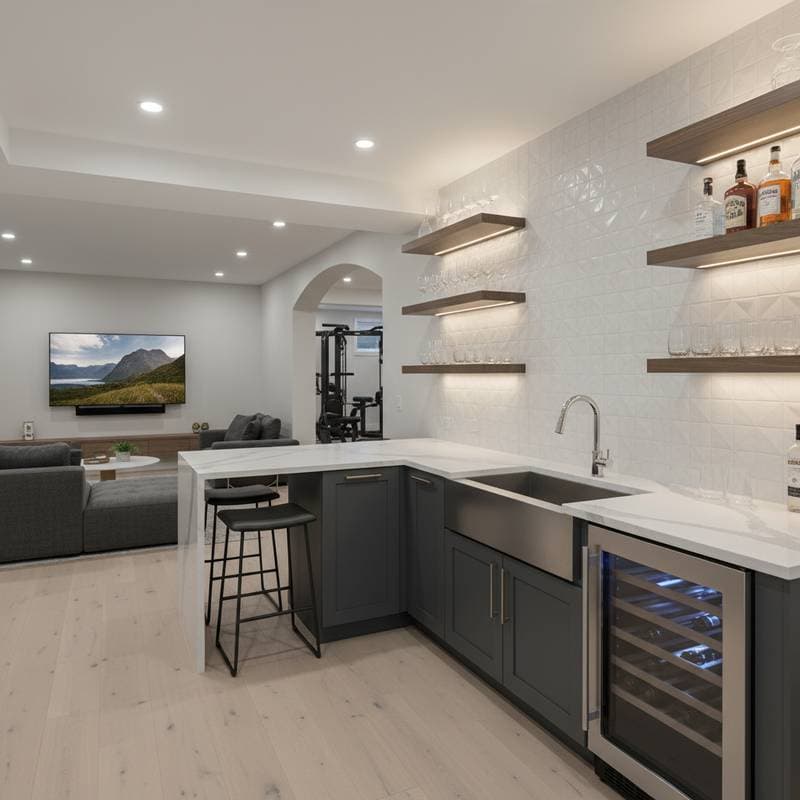How Basement Gyms Increase Home Value by 15% in the Wellness Era
A well-finished basement gym elevates a home's resale value by up to 15 percent. Modern buyers seek dedicated wellness areas, and a bright, organized gym represents a seamless lifestyle enhancement. This upgrade expands usable square footage and functionality while preserving the home's overall layout.
Reasons Basement Gyms Enhance Property Value
Basements frequently remain underused. Repurposing one as a home gym shifts a dim, idle area into a vibrant, inviting fitness hub. Wellness has become integral to home design, offering privacy, eliminating travel needs, and providing a distinct zone separate from daily living spaces.
Prospective buyers view such a space as immediately functional square footage, rather than a vague potential room requiring vision. This perception leads to elevated appraisals and expedited sales.
Guide to Converting a Basement into a Gym
-
Assess moisture levels and structural integrity.
Inspect for fissures, seepage, or humidity. Prioritize a dry, secure base; employ a moisture meter for precise readings. -
Design the layout.
Determine placements for equipment, storage, and mirrors. Maintain a minimum of three feet clearance surrounding each machine for safe movement. -
Incorporate insulation and flooring.
Install foam board or spray foam to regulate temperature. Select rubber mats or durable vinyl flooring to ensure safety and dampen sound. -
Enhance lighting and airflow.
Incorporate LED lights emitting bright, neutral illumination. Add a compact fan or ventilation system to promote air circulation and humidity reduction. -
Complete walls and ceilings.
Apply moisture-resistant drywall or paneling. Finish with washable, low-VOC paint for longevity. -
Update electrical systems.
Additional circuits may support treadmills or audio equipment. Engage a licensed electrician for outdated or insufficient wiring. -
Equip and evaluate.
Position furniture and gear, verify lighting functionality, and confirm ventilation prior to adding decorative elements like mirrors.
Cost Breakdown
| Task | Typical Cost Range | Factors Influencing Cost |
|---|---|---|
| Moisture control and sealing | $1,000 - $4,000 | Degree of existing dampness, foundation state |
| Electrical and lighting | $800 - $2,500 | Requirement for new circuits, LED installations |
| Flooring installation | $600 - $2,000 | Flooring material, area size |
| Framing and drywall | $1,500 - $5,000 | Ceiling height, insulation extent |
| Paint, mirrors, and finishes | $300 - $1,500 | Material quality, labor involved |
| Equipment setup | $1,000 - $5,000 | Equipment brands, volume, delivery fees |
Overall project costs range from $5,000 to $20,000 for average homes. Regional differences and finish quality significantly impact totals.
Project Timeline
Core construction spans two to four weeks. Addressing moisture issues or electrical modifications may add one additional week. Independent efforts extend duration, particularly for framing or finishing tasks. Professional involvement accelerates completion at a higher expense.
Independent Work Versus Professional Services
Opt for independent work when:
- The area already features dry conditions and adequate wiring.
- You prefer manual involvement.
- The design remains basic, incorporating mats and compact equipment.
Engage professionals when:
- New wiring, framing, or climate control proves necessary.
- Moisture or high humidity persists.
- A refined, market-ready appearance is the goal.
Professionals provide regulatory expertise and efficiency. They enhance value through superior materials and adherence to safety standards. Independent approaches reduce labor expenses but risk diminished resale appeal if results appear inconsistent or fail regulatory checks.
Essential Tools and Materials
- Moisture meter
- Drill and screw gun
- Insulation materials and vapor barriers
- Rubber or vinyl flooring options
- LED lighting units
- Paint and primer supplies
- Dehumidifier or exhaust fan
- Mirrors or protective wall panels
- Level and measuring tape
Prepare these items in advance to sustain progress and prevent interruptions for supplies.
Safety Considerations and Building Codes
Obtain local permits prior to installing outlets or constructing frames; many municipalities mandate inspections for completed basements. Install ground-fault circuit interrupter outlets in moisture-prone locations. Secure heavy apparatus on reinforced flooring, bolstering joists as required. Avoid obstructing escape windows or pathways. Limit fixtures to sealed, interior-rated models in confined or humid environments.
Neglecting these measures invites inspection failures and hazards that undermine rather than support value growth.
Adapting to Climate and Location
In cooler climates, prioritize insulation and vapor barriers to combat condensation. Humid areas demand dehumidifiers as standard equipment. Elevated groundwater levels necessitate sump pumps or drainage solutions before enclosing the space.
Regions prone to wildfires or seismic activity enforce unique framing or fire-resistant specifications. Consult municipal building authorities to verify requirements prior to commencement.
Elements That Maximize Value
Appraisers and buyers favor orderly aesthetics, utility, and ease. Optimal returns derive from:
- Sealed, completed walls and ceilings. Exposed concrete appears uninviting and limits usability.
- Adequate illumination. Uniform, vivid lighting promotes security and a professional ambiance.
- Effective ventilation. Odor-free air subtly influences perceptions more than acknowledged.
- Versatile arrangement. Accommodations for yoga, cardiovascular exercise, and strength training broaden appeal.
Steer clear of excessive personalization. Fixed shelving or bulky machinery narrows buyer compatibility; emphasize adaptability.
Investment Returns
Basement gym transformations recoup 70 to 90 percent of expenses upon sale. Properties featuring wellness amenities attract premium bids and close transactions swiftly. The projected 15 percent value increase relies on premium executions free of moisture concerns.
Beyond financial recovery, daily advantages include reduced gym fees, eliminated commutes, and minimized wear on primary living zones. These factors solidify the upgrade's economic viability.
Pitfalls to Sidestep
- Overlooking moisture management. Finishes deteriorate rapidly without proper dryness.
- Excessive equipment density. Preserve areas for dynamic activities like stretching.
- Disregarding overhead clearance. Low structures render certain exercises hazardous.
- Selecting standard residential finishes. Opt for humidity-tolerant alternatives for endurance.
- Inadequate illumination. Subpar lighting diminishes the space's allure.
Remedying oversights post-completion doubles expenses; thorough planning proves essential.
Strategies for Optimal Results
Incorporate full-length mirrors to expand perceived space and aid posture assessment. Employ interlocking flooring tiles for straightforward repairs. Integrate audio speakers or a compact screen for motivational content. Choose pale, neutral wall hues to amplify brightness. Organize storage for essentials like towels and accessories.
Such details convey deliberate craftsmanship over hasty assembly.
Indicators for Professional Assistance
Seek expert aid upon detecting foundational dampness, power constraints, or stability concerns. Certified specialists perform diagnostics and corrections before cosmetic investments. In permit-heavy locales, they manage approvals and evaluations efficiently.
Early professional input frequently offsets later expenditures. Undetected leaks or electrical flaws mid-process demand costly demolitions.
Preserving the Upgrade
Maintain humidity below 50 percent. Wipe floors weekly to prevent accumulation. Refresh paint as wear appears every few years. Review for fissures or infiltration seasonally. Promptly substitute frayed mats or faulty lights.
Diligent upkeep ensures enduring appeal for sales and consistent enjoyment. Discerning buyers distinguish preserved areas from hastily executed ones.
Frequently Asked Questions
What value increase does a basement gym provide?
Up to 15 percent with comprehensive finishing, dryness, and illumination.
Is a permit required for basement conversion?
Typically, yes, for additions like walls, electrical, or ventilation; verify with local regulations.
Is carpet suitable for a basement gym?
No, as it retains moisture; prefer rubber or vinyl surfaces.
Realizing Lasting Benefits
A thoughtfully executed basement gym not only elevates market worth but also enriches routine wellness practices. By addressing foundational needs and prioritizing versatile design, homeowners secure both immediate utility and future gains. This investment aligns personal health goals with smart property enhancement.











